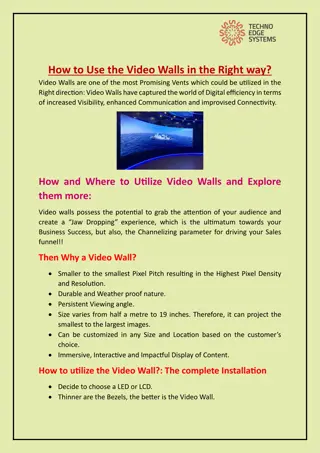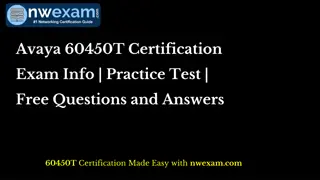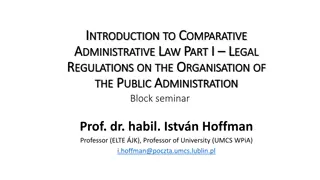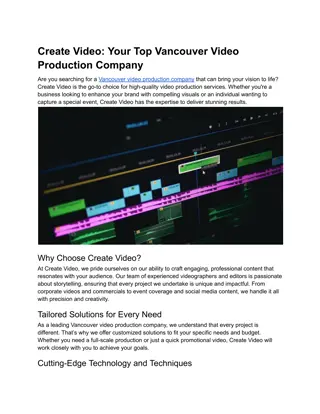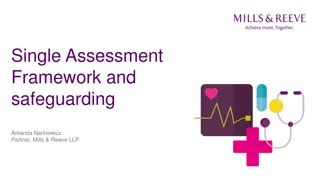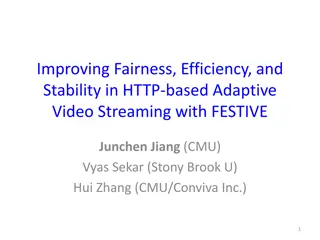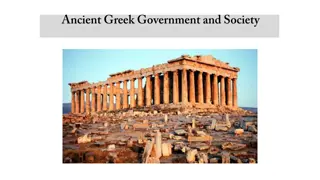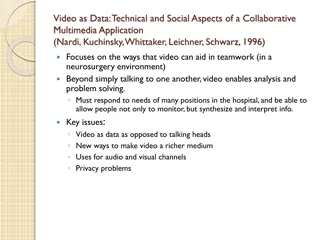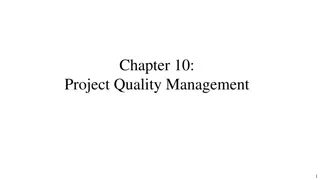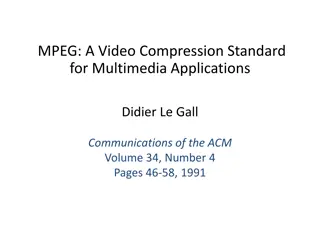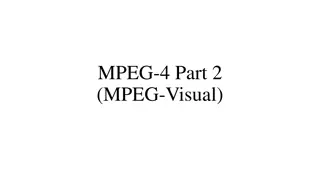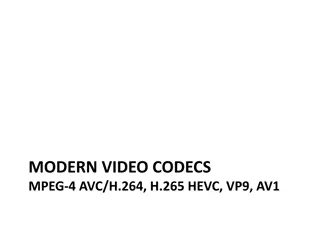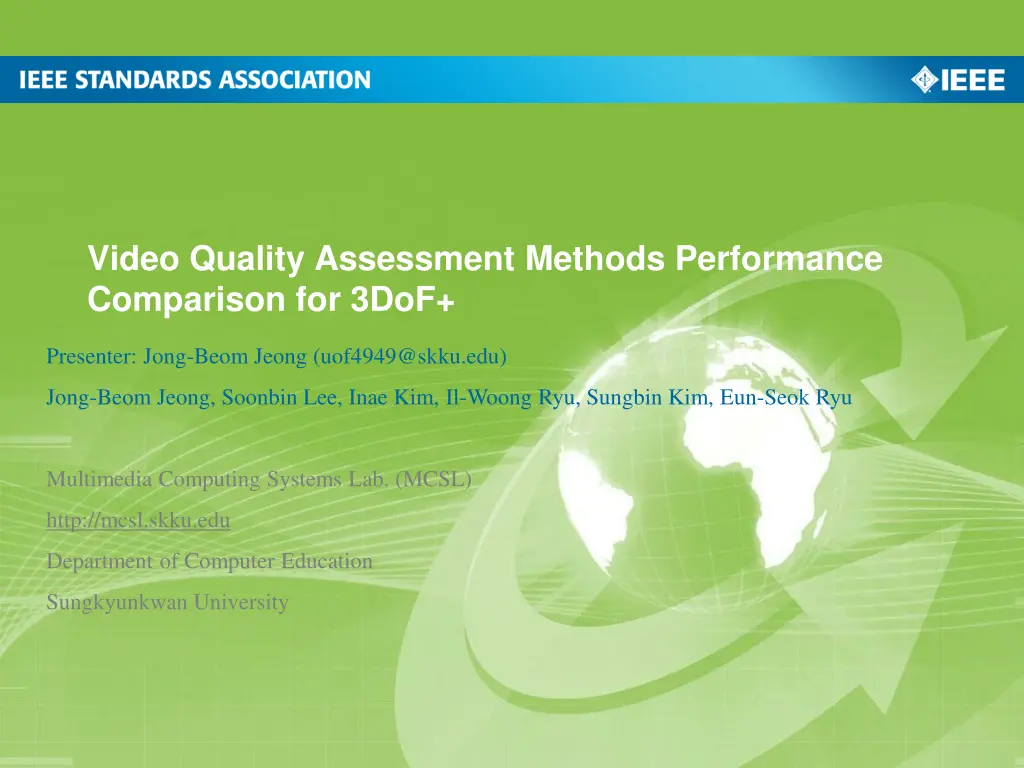
Methods Performance Comparison for 3DoF+ in Video Quality Assessment
Explore the performance comparison of different methods for assessing video quality in the context of 3 degrees of freedom (3DoF) and beyond. Topics include the standardization of 3DoF+, virtual reality in MPEG-I, end-to-end video quality assessment, and limitations in traditional quality metrics like PSNR. The research focuses on enhancing user experience and optimizing video streaming systems for immersive media.
Download Presentation

Please find below an Image/Link to download the presentation.
The content on the website is provided AS IS for your information and personal use only. It may not be sold, licensed, or shared on other websites without obtaining consent from the author. If you encounter any issues during the download, it is possible that the publisher has removed the file from their server.
You are allowed to download the files provided on this website for personal or commercial use, subject to the condition that they are used lawfully. All files are the property of their respective owners.
The content on the website is provided AS IS for your information and personal use only. It may not be sold, licensed, or shared on other websites without obtaining consent from the author.
E N D
Presentation Transcript
Video Quality Assessment Methods Performance Comparison for 3DoF+ Presenter: Jong-Beom Jeong (uof4949@skku.edu) Jong-Beom Jeong, Soonbin Lee, Inae Kim, Il-Woong Ryu, Sungbin Kim, Eun-Seok Ryu Multimedia Computing Systems Lab. (MCSL) http://mcsl.skku.edu Department of Computer Education Sungkyunkwan University
Virtual Reality in MPEG-I Three phases of ISO/IEC MPEG-Immersive VR standardization To support the entire movement in VR, 6DoF is required 6DoF media support will be completed by 2022 3DoF+ standard will be established by 2020 to support the limited 6DoF Step 1 Step 2 Step 3 Yaw Up Up Yaw Yaw Forward Forward Roll Roll Left Roll Left Right Right Pitch Backward Backward Pitch Pitch Down Down Enable VR commercial servicers by 2020 Support 6DoF by 2022 Complete 3DoF standard by 2017 Rotate head in a fixed state 360 video full streaming by default Tiled streaming if possible Allow head rotation and movement within a restricted area 6DoF video will reflect user s walking motion User-to-user conversations and projection optimization Support interaction with virtual environments 3079-20-0027-00-0002
Virtual Reality in MPEG-I (Contd) Background General framework for 3DoF+ S/W Uses HEVC (not MV-HEVC) and additional metadata End-to-end video quality assessment is conducted Block diagram for 3DoF+ S/W platform Source: Jong-Beom Jeong, Soonbin Lee, Dongmin Jang, Eun-Seok Ryu. Towards 3DoF+ 360 Video Streaming System for Immersive Media IEEE Access, vol. 7, pp. 136399-136408, 2019 3079-20-0027-00-0002
Virtual Reality in MPEG-I (Contd) Background 3DoF+ video has multiple views, including texture + depth Based on the views, viewport of an user is generated ClassroomVideo TechnicolorMuseum TechnicolorHijack TechnicolorPainter IntelKermit Sequence Class Resolution No. of views Frame count Frame rate Source FoV ClassroomVideo A 4096x2048 15 120 30 360 x 180 TechnicolorMuseum B 2048x2048 24 300 30 180 x 180 TechnicolorHijack C 4096x4096 10 300 30 180 x 180 TechnicolorPainter D 2048x1088 16 300 30 46 x 25 IntelKermit E 1920x1080 13 300 30 77.8 x 77.8 3079-20-0027-00-0002
Virtual Reality in MPEG-I (Contd) Limitation In some cases, PSNR (traditional quality metric) does not reflect the user s QoE Unlike traditional codec, 3DoF+ shows different types of artifacts -> Need to find a better quality metric MCSL (proposed) PSNR: 39.46 dB HEVC (anchor) PSNR: 40.18 dB Difference between objective and subjective quality in 3DoF+ 360 video viewport rendering 3079-20-0027-00-0002
Objective Quality Metrics for Immersive Video Background Immersive video shows different types of artifacts For evaluation, common test conditions for immersive video defines the quality metrics Purpose Evaluate the 3DoF+ system SW (test model for immersive video (TMIV)) to: Provide the viewport which satisfies the user s quality of experience (QoE) Metric name Document No. Location Tag/branch WS-PSNR w18069 v2.0.1 https://gitlab.com/mpeg-i-visual/wspsnr VMAF - v1.3.14 https://github.com/Netflix/vmaf MS-SSIM - v1.3.14 https://github.com/Netflix/vmaf VIF - v1.3.14 https://github.com/Netflix/vmaf IV-PSNR w18709 v1.0 https://gitlab.com/mpeg-i-visual/ivpsnr Objective quality metrics for immersive video 3079-20-0027-00-0002
Test Conditions Test Materials Followed common test conditions (CTC) of MPEG-I 5 test sequences(class A, B, C, D, E) were encoded For subjective data, used 3DoF+ CfR results including mean opinion score (MOS) Environment Versions of softwares meet the requirements of 3DoF+ CfP OpenCV 3.4.2 was used to build reference view synthesizer (RVS) v3.1 3079-20-0027-00-0002
Experimental Results VMAF showed the best correlation coefficient with MOS PSNR showed the worst results among the metrics Correlation coefficient with MOS Metric name PSNR 0.3012 SSIM 0.3932 MS-SSIM 0.5694 VMAF 0.6601 IV-PSNR 0.5539 Correlation coefficient between MOS and objective quality metrics Correlation between MOS and objective quality metrics 3079-20-0027-00-0002
Conclusion Problem For state-of-the-art virtual reality system, quality metric is really important Subjective quality and traditional metric (e.g. PSNR) shows low correlation Proposed Methods and Insights Quality metrics of MPEG-I were analyzed with 3DoF+ subjective quality data Traditional metric (e.g. PSNR) is not appropriate for 3DoF+ Future Work Human-familiar quality metric should be developed 3079-20-0027-00-0002

